A Guide to the Most Beautiful Tulip Varieties for Your Garden
Published: August 22, 2025 at 9:00:28 AM UTC
Tulips stand as the quintessential spring flower, bringing a symphony of color to gardens just when we need it most after winter's long embrace. Like nature's own color palette, these versatile blooms offer gardeners an extraordinary range of options — from classic cup-shaped varieties to exotic fringed and parrot forms that seem almost too artistic to be real. With over 3,000 registered varieties spanning 15 distinct classifications, tulips offer something for every garden style, climate condition, and color preference. This guide showcases ten of the most beautiful tulip varieties that will transform your garden into a springtime masterpiece.
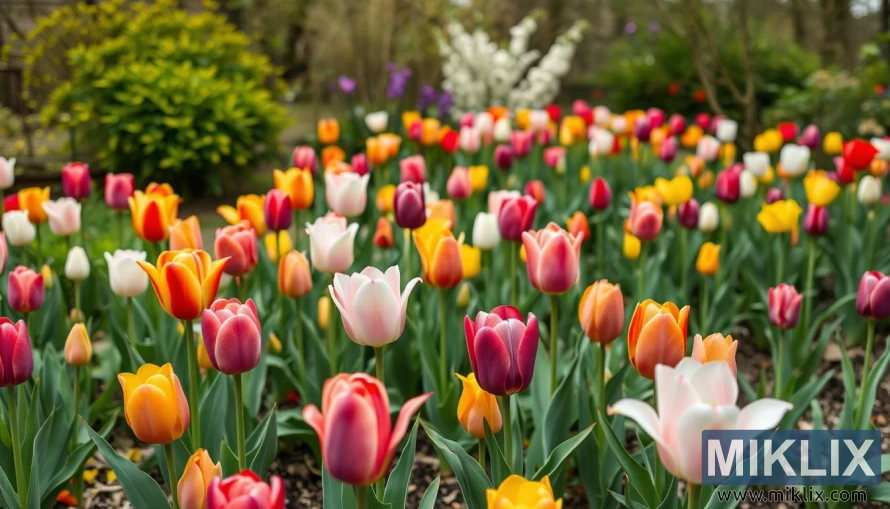
Top 10 Beautiful Tulip Varieties for Gardens
Queen of Night
Bloom Time: Late spring
Height: 24 inches
Color: Deep maroon-black
Special Features: Dramatic, velvety petals with a sophisticated appearance
Garden Use: Creates stunning contrast when planted with white or pastel tulips; excellent as cut flowers
The Queen of Night tulip reigns supreme in dramatic garden displays. Like a black velvet evening gown at a garden party, these tulips add sophistication and mystery to any planting scheme. Their deep, rich color creates a perfect backdrop for brighter blooms, making other colors appear even more vibrant by contrast.
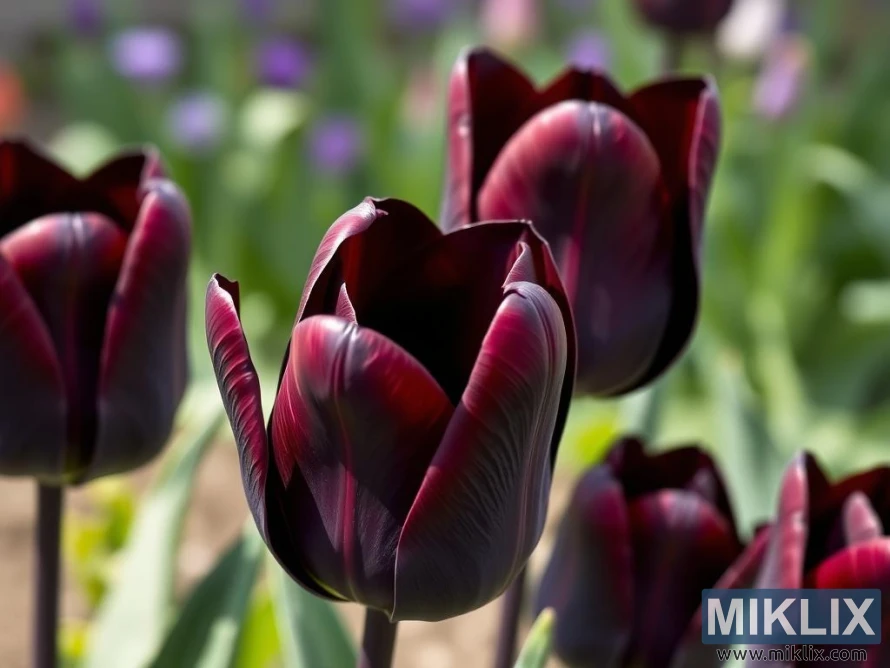
Parrot Tulips
Bloom Time: Late spring
Height: 14-26 inches
Color: Available in numerous vibrant colors and patterns
Special Features: Feathery, flamboyant petals with frilled edges resembling exotic birds
Garden Use: Statement pieces in garden beds and spectacular in floral arrangements
Parrot tulips bring artistic flair to the garden with their feathery, flamboyant petals. These show-stopping blooms resemble exotic birds of paradise, with their ruffled, scalloped petals creating dramatic visual interest. Their unique form makes them conversation pieces in any garden setting.
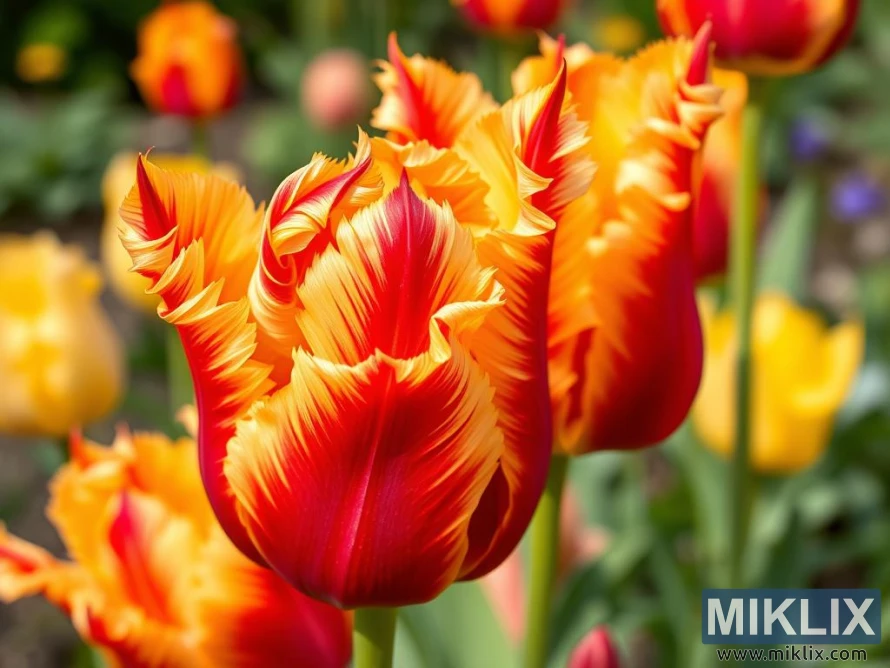
Double Late 'Angelique'
Bloom Time: Late spring
Height: 16-18 inches
Color: Soft pink with subtle blush tones
Special Features: Peony-like double blooms with lush, full appearance
Garden Use: Perfect for romantic garden settings, containers, and cutting gardens
The 'Angelique' tulip brings romance to the garden with its peony-like blooms. These double flowers are so full and lush they resemble fluffy pink clouds hovering above the garden. Their soft color and luxurious form make them perfect for cottage gardens and elegant floral arrangements.
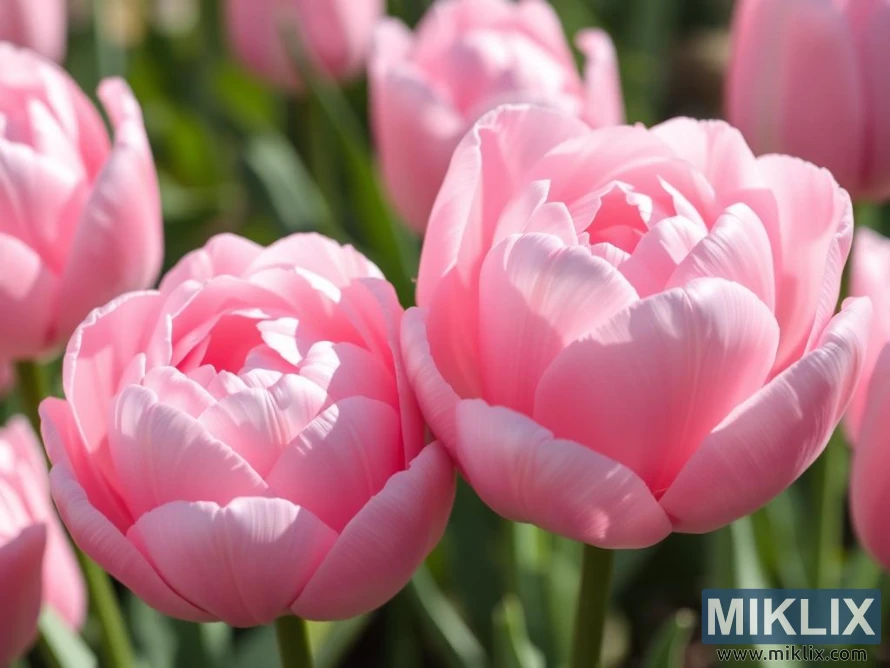
Lily-Flowered 'Ballerina'
Bloom Time: Late spring
Height: 20-24 inches
Color: Vibrant orange with yellow edges
Special Features: Elegant, pointed petals that curve outward like a dancer's arms
Garden Use: Adds grace and movement to borders; excellent for naturalizing
True to its name, the 'Ballerina' tulip dances in spring breezes with its elegant, reflexed petals. Like graceful dancers on a garden stage, these tulips bring movement and energy with their vibrant orange coloring and distinctive lily-like form. They're particularly striking when planted in drifts where they can showcase their dynamic presence.
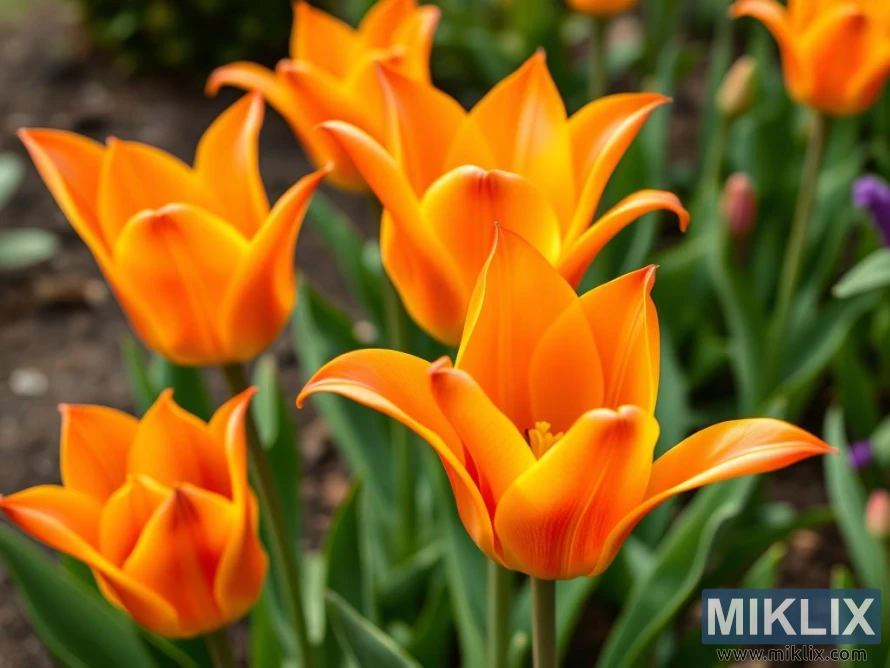
Darwin Hybrid 'Pink Impression'
Bloom Time: Mid-spring
Height: 20-24 inches
Color: Vibrant pink with subtle rose undertones
Special Features: Exceptionally large blooms on strong, sturdy stems
Garden Use: Perfect for mass plantings, borders, and as reliable cut flowers
Darwin Hybrid tulips like 'Pink Impression' are the workhorses of the tulip world, combining beauty with reliability. Their impressive size and sturdy nature make them perfect for gardeners who want maximum impact with minimum fuss. These tulips often return for several years, making them an excellent investment for your garden.
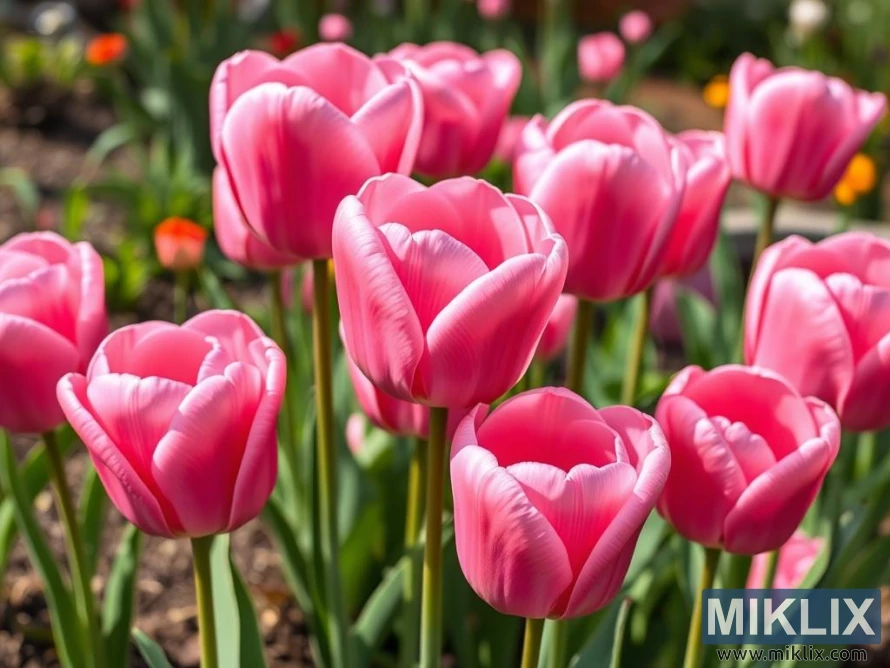
Fringed 'Fancy Frills'
Bloom Time: Late spring
Height: 18-20 inches
Color: White with pink fringed edges
Special Features: Delicate, crystalline fringe along petal edges
Garden Use: Adds textural interest to borders; stunning in bouquets
Fringed tulips like 'Fancy Frills' bring a touch of whimsy to the garden with their decorative edges. The delicate fringe along each petal resembles fine crystal or ice formations, creating a magical effect when backlit by morning or evening sun. These conversation-starting blooms add textural interest to any garden design.
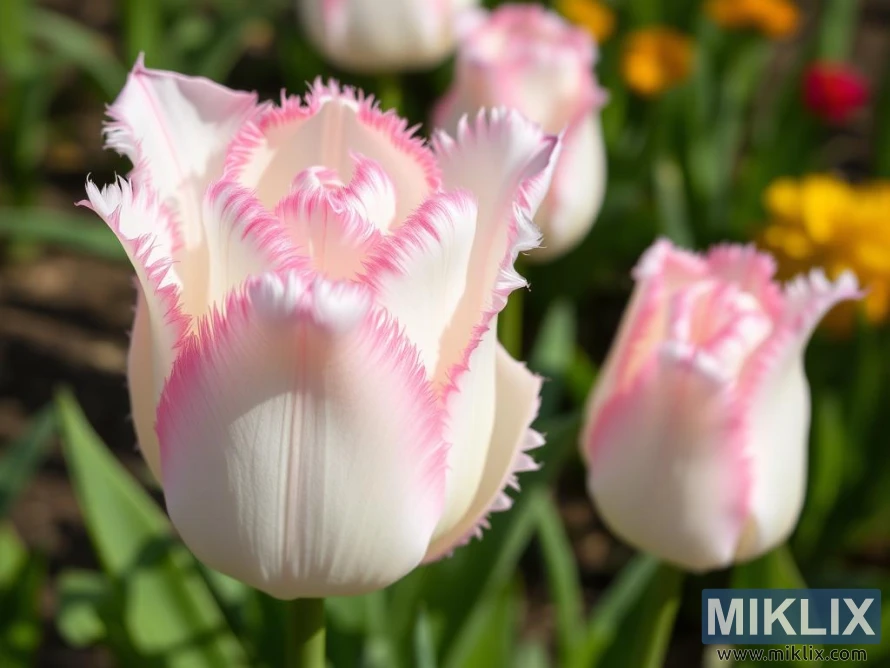
Triumph 'Negrita'
Bloom Time: Mid-spring
Height: 16-20 inches
Color: Deep, rich purple with glossy finish
Special Features: Classic cup shape with rich, saturated color
Garden Use: Versatile for beds, borders, and containers; excellent cut flowers
Triumph tulips represent the classic tulip form that most people envision, and 'Negrita' showcases this perfection with its deep purple blooms. These reliable performers bring rich color to the mid-spring garden and stand up well to spring weather fluctuations. Their sturdy nature makes them excellent for both garden display and cut flower arrangements.
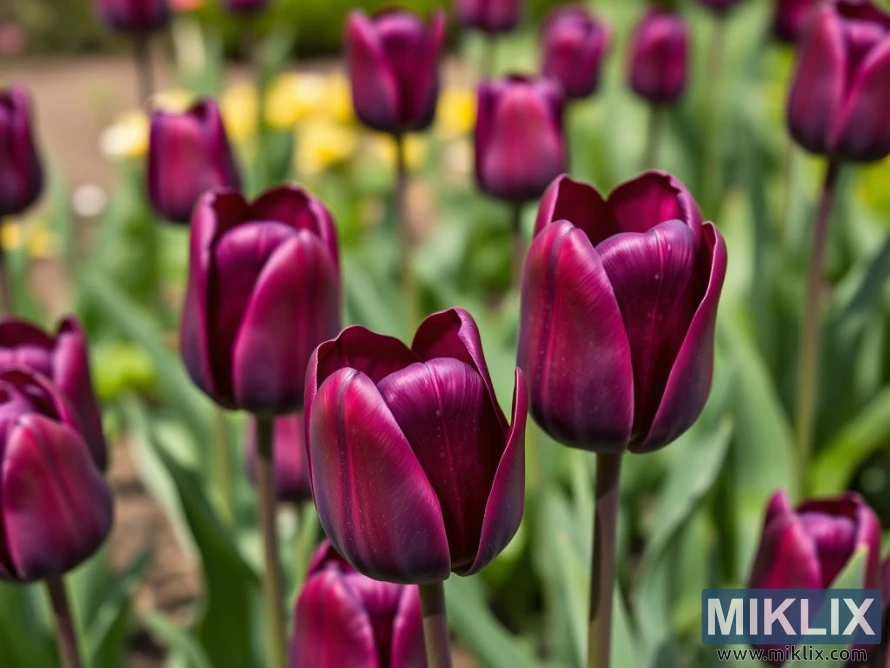
Single Early 'Apricot Beauty'
Bloom Time: Early spring
Height: 12-14 inches
Color: Soft apricot-pink that deepens as flowers mature
Special Features: Early blooming with delicate coloration
Garden Use: Perfect for containers, front of borders, and forcing indoors
Single Early tulips like 'Apricot Beauty' are the first heralds of spring, bringing color to the garden when it's most needed. Their soft, warm coloration brings a gentle glow to early spring gardens, like the first rays of spring sunshine captured in flower form. These tulips are particularly valuable for extending your tulip display season.
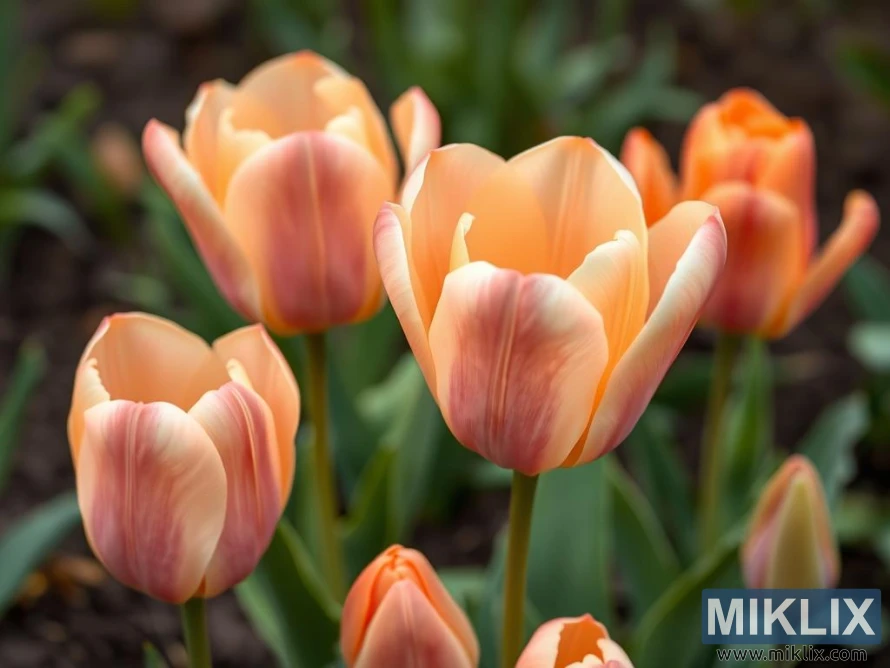
Viridiflora 'Spring Green'
Bloom Time: Late spring
Height: 18-20 inches
Color: White with distinctive green feathering
Special Features: Unique green markings on petals
Garden Use: Combines beautifully with other late tulips; long-lasting in arrangements
Viridiflora tulips feature distinctive green markings that make them truly unique in the tulip world. 'Spring Green' combines crisp white with fresh green in a way that bridges the gap between flowers and foliage. These architectural blooms add a contemporary feel to garden designs and create long-lasting, distinctive floral arrangements.
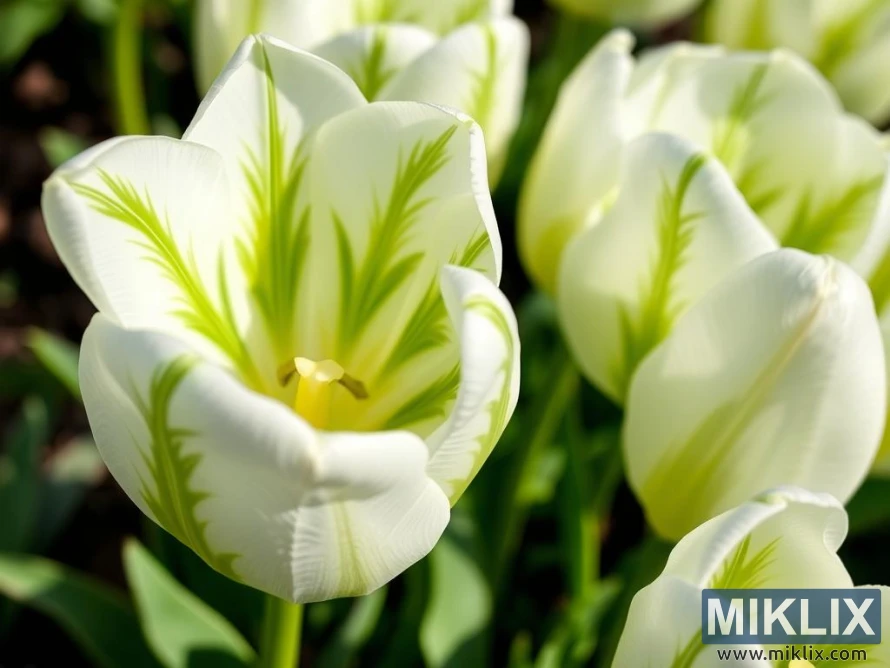
Species Tulip 'Tulipa tarda'
Bloom Time: Early to mid-spring
Height: 4-6 inches
Color: Yellow centers with white-tipped petals
Special Features: Star-shaped flowers that open flat in sunlight
Garden Use: Perfect for rock gardens, edging, and naturalizing
Species tulips represent the wild ancestors of modern hybrid tulips, and 'Tulipa tarda' showcases their natural charm. These diminutive stars of the garden open fully in sunlight to reveal their bright yellow centers. Unlike their taller hybrid cousins, species tulips reliably return year after year and even multiply when happy, creating lasting garden displays.
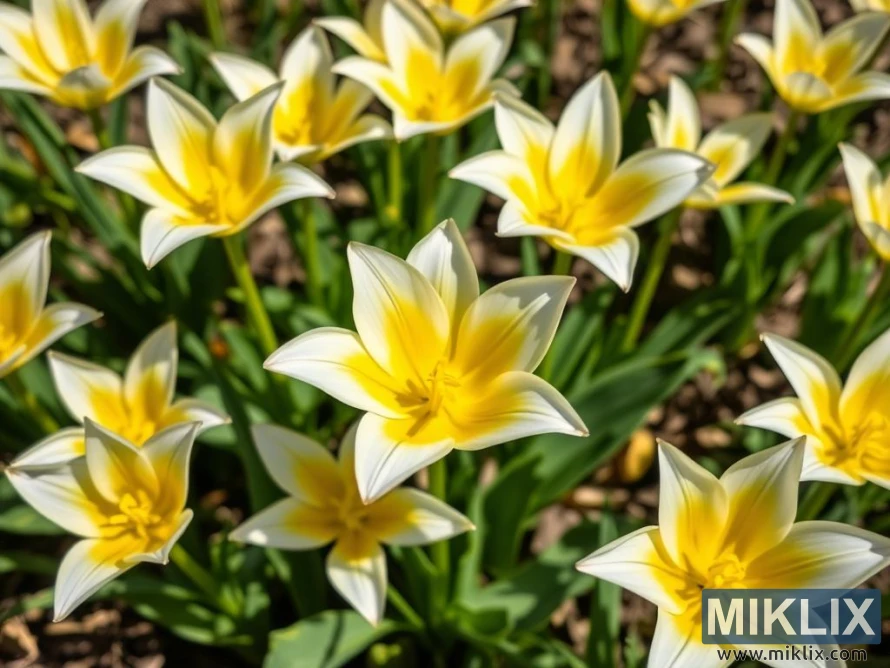
Design Tips for Stunning Tulip Gardens
Best Tulips for Different Garden Uses
Best for Containers:
- Single Early 'Apricot Beauty'
- Double Late 'Angelique'
- Triumph 'Negrita'
- Species 'Tulipa tarda'
Most Fragrant Varieties:
- Single Early 'Apricot Beauty'
- Lily-Flowered 'Ballerina'
- Double Late 'Angelique'
- Species Tulipa suaveolens
Longest-Lasting Blooms:
- Darwin Hybrid 'Pink Impression'
- Viridiflora 'Spring Green'
- Double Late 'Angelique'
- Fringed 'Fancy Frills'

Creating Extended Bloom Periods
To enjoy tulips throughout spring, plant a thoughtful mix of early, mid, and late-season varieties. Like orchestrating a symphony of color, this approach ensures your garden maintains visual interest for weeks rather than days. Start with Single Early types like 'Apricot Beauty,' follow with mid-season Darwin Hybrids and Triumphs, and finish with the grand finale of late-blooming varieties like Parrots and Double Lates.
Pro Tip: For the most impressive display, plant tulips in generous drifts of at least 7-10 bulbs of the same variety. This creates blocks of color that make a much stronger visual impact than scattered individual plantings.
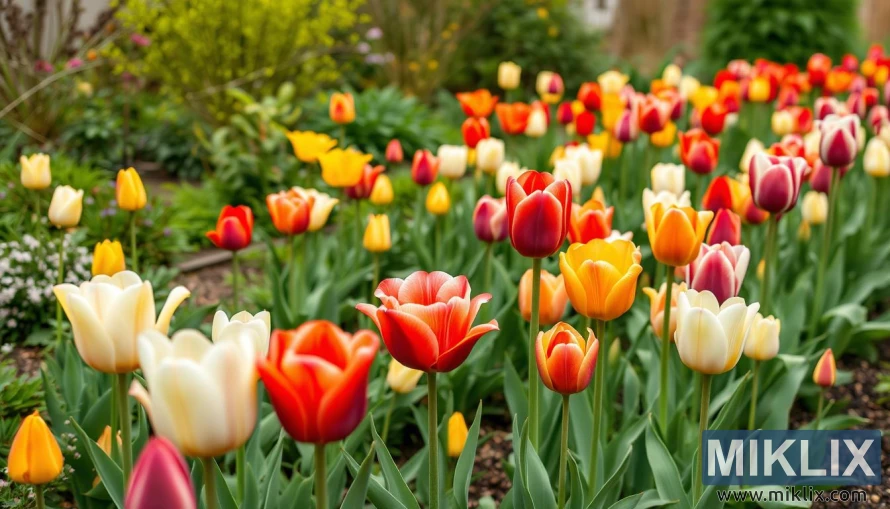
Essential Planting Tips for Beautiful Tulip Varieties
Successful tulip displays begin with proper planting techniques. Plant bulbs in fall, about 4-6 weeks before the ground freezes (typically October to November in most regions). Choose a location with full sun, which means at least six hours of direct sunlight daily, and well-drained soil to prevent bulb rot.
Planting Depth and Spacing
Plant tulip bulbs at a depth of three times their height (usually 6-8 inches deep) with the pointed end facing up. Space bulbs 4-6 inches apart for standard varieties, or closer for species tulips. For container planting, you can place bulbs much closer together for a fuller effect—almost touching but not quite.
Soil Preparation
Tulips prefer well-drained, slightly alkaline soil. Before planting, amend heavy clay soils with compost or grit to improve drainage. Add bone meal or a specialized bulb fertilizer to the planting hole to provide nutrients for strong spring growth. Avoid fresh manure, which can burn bulbs.
Protection from Pests
Tulip bulbs are a favorite snack for squirrels, mice, and other garden pests. Protect your investment by spraying bulbs with animal repellent before planting or placing a layer of chicken wire just above the bulbs before backfilling with soil. Another effective strategy is interplanting with daffodils, which rodents tend to avoid due to their unpalatable taste.
Conclusion
With their incredible diversity of colors, forms, and blooming times, tulips offer endless possibilities for creating your personal garden paradise. By selecting a thoughtful mix of varieties—from the early Single Earlies to the dramatic late-season Parrots and Double Lates—you can enjoy a continuous display of color throughout spring.
Remember that tulips, like dancers on a garden stage, perform best when given the right conditions: full sun, well-drained soil, and proper planting depth. Whether you prefer the classic elegance of Triumph tulips, the romantic fullness of Double varieties, or the wild charm of Species tulips, there's a beautiful tulip variety waiting to bring joy to your garden.
Further Reading
If you enjoyed this post, you may also like these suggestions:
- A Guide to the Most Beautiful Lavender Varieties to Grow in Your Garden
- A Guide to the Most Beautiful Zinnia Varieties to Grow in Your Garden
- A Guide to the Most Beautiful Varieties of Bleeding Heart to Grow in Your Garden
